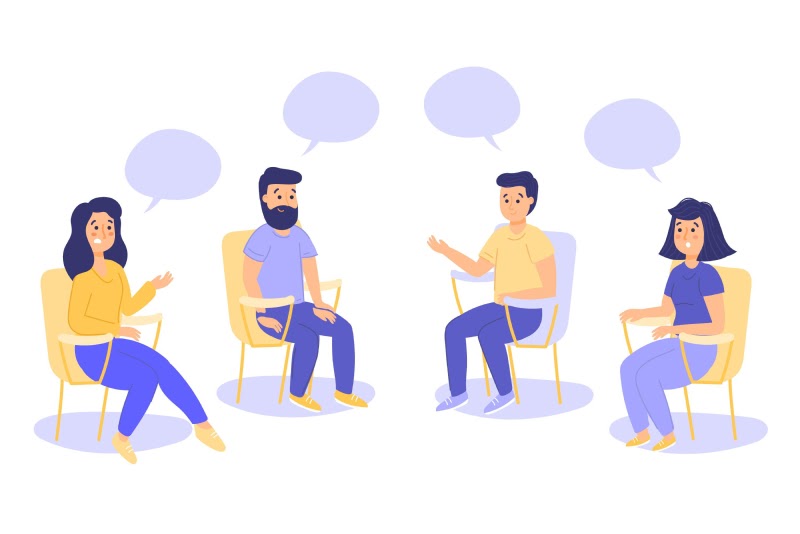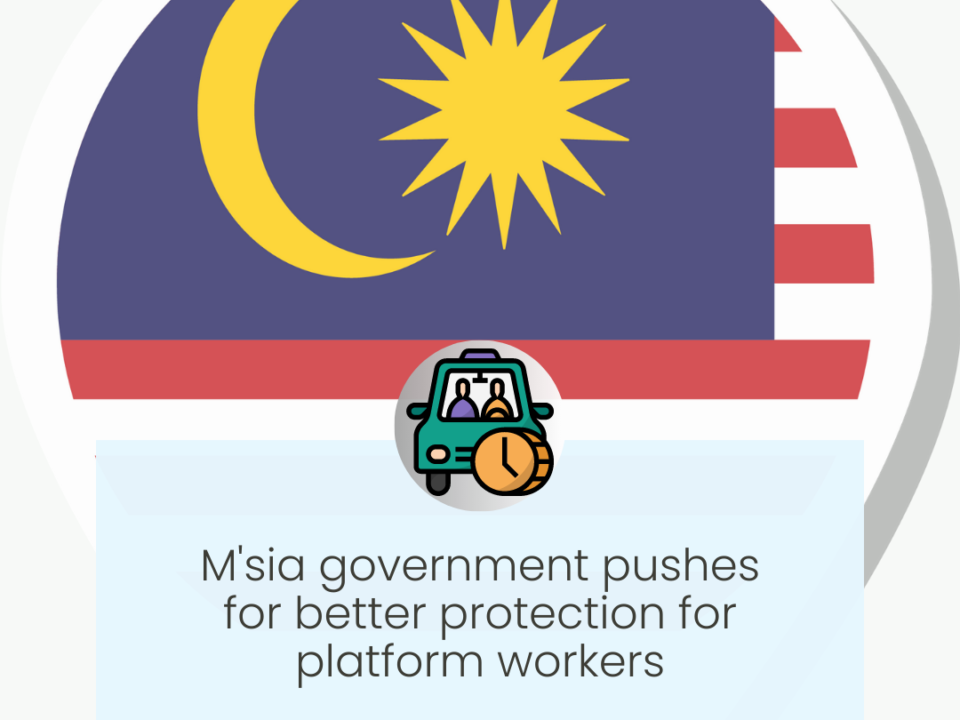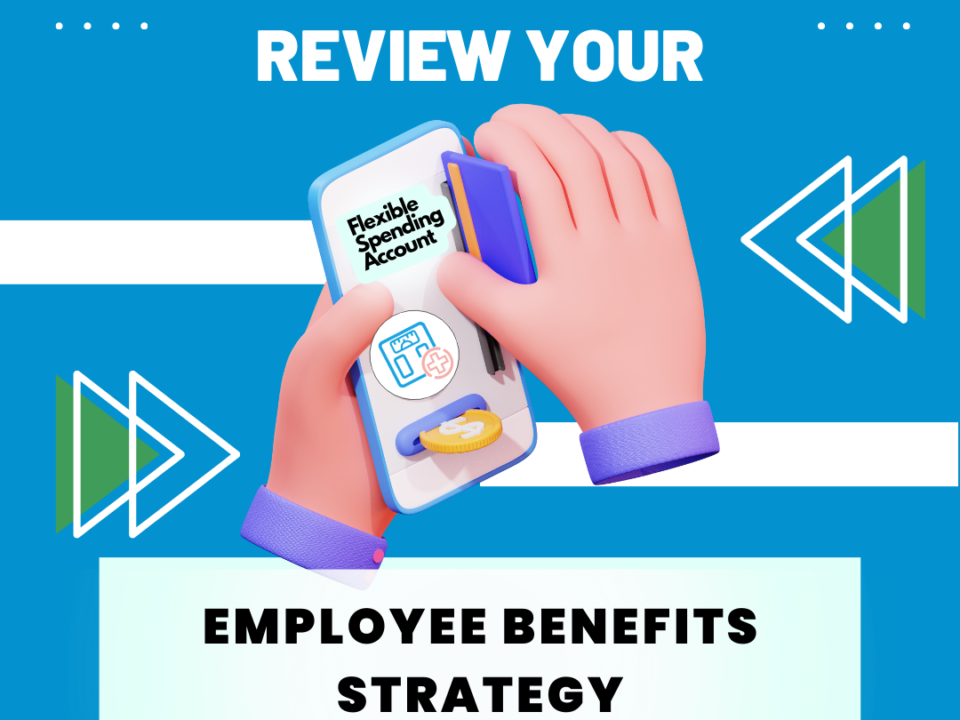
The 5 Key 2022 HR Trends
October 11, 2022
Employee handbook in Malaysia – Best Practices [Template]
October 18, 20225 ways to talk about mental health at work
General
5 ways to talk about mental health at work
October 11, 2022

Everyone's talking about mental health in the workplace these days. While our view on mental health at work is shifting, and the fact that it affects everyone, it's good to go back to first principles.
It's now more important than ever to support mental health in the workplace. To create a thriving environment for employees, mental health resources must be put into place. Mental health is also one of the key HR trends in 2022.
It's no secret that employment hazard factors may have a negative influence on one's mental health. But, before we get into workplace solutions for these issues, let us examine the precise meaning of mental health.

What is mental health?
Mental health is a state of wellbeing in which an individual can deal with everyday stressors, work productively and achieve his or her full potential.
Your mental health is just as important as your physical and social wellbeing when it comes to leading a healthy life.Your mental health is just as important as your physical and social wellbeing when it comes to leading a healthy life.
It's essential to remember that mental health is more complex than just the presence or absence of mental illness. Someone can have poor mental health but not be ill, and someone can have good mental health despite having a mental illness.
We believe that mental health and employee performance are two sides of the same coin. They are what enable people to flourish when combined.
Good mental health conditions should be a key focus for companies that want their employees to perform at their best.
The five key takeaways on mental health are as follows:
- Mental health is more than just the lack of mental illness.
- You can't have a healthy physical condition without a healthy mental state.
- Your mental health directly impacts your physical performance.
- Promoting wellness in the workplace should be a high priority.
The importance of discussing mental health at work
Positive mental health is essential because it allows individuals to deal with difficulties and personal setbacks at work and at home. It's even more important right now because we're moving towards remote offices.
Teams that have a positive mental health at work are more adaptable when changing roles and dealing with difficult situations. Not only does it help employees excel in their positions and manage stress, but it also allows them to become more resilient. This way, each person is able to reach their fullest potential.
Given all these positive outcomes, it's critical that we discuss workplace mental health. If you want to create an environment where employees feel comfortable talking openly without fear of discrimination, it is important to foster a safe space. If you don't do this, you might not get important feedback that could help keep superstar employees.

Work-related risk factors that can damage mental health
Employee mental health can decline in the workplace due to:
Lack of workplace health and safety rules
Workplace safety and health rules safeguard employees, visitors, and consumers from harm. They also protect businesses.
For example, a policy might entail discussing health concerns with employees or showing your dedication to safe workplaces.
Do your employees handle hazardous materials or work with equipment that isn't well-maintained? Are there simply too many people in the workplace, with little light or ventilation, or is it unclean? Are accidents at work common? Have you ever had a safety complaint or issue that went unresolved?
Places of work that don't have good health and safety policies can negatively impact employee mental health, cause them to leave, and decrease productivity.
Inefficient communication and management practices
The sign of a good manager-employee relationship is kind and engaging communication and management techniques. In contrast, poor communication and practices put a strain on the connection, cause mental distress, and raise workplace tension.
Not enough support for employees
When managers withhold resources and fail to eliminate workplace obstacles, employees often become overwhelmed and demotivated. For example, rather than expecting employees to try and figure out tasks they don't understand, managers should show them how to complete those tasks and then stay available for any questions or pleas for help.
Unreasonable performance pressure
Managers' unrealistic demands put employees under a lot of strain. It results in an increase in pressure, increased workload and working hours, as well as emotional weariness.
Job insecurity
The COVID-19 pandemic caused many people to lose their jobs in 2020, which led to a lot of stress and anxiety about being able to afford rent or taking care of kids. This is a significant mental health issue that needs to be addressed.
Negative effects of poor mental health in the workplace
There are various consequences of poor mental health in the workplace, including:
- Decreased productivity
- Unable to focus
- Tardiness or absenteeism
- Increase in errors or accidents
- Low morale
- Isolation
- Interpersonal conflict
When employees suffer from poor mental health, it takes a toll on their work. They may have trouble staying on task, focusing on their work, or meeting deadlines.
Additionally, they may start making more mistakes, which can lead to accidents. And, if other employees see that an individual is struggling, it might decrease morale and lead to isolation. In some cases, interpersonal conflict may also arise.

5 ways to talk about mental health in the workplace
#1. Recognize when someone is struggling and lend a listening ear
If you notice that someone at work is struggling, reach out to them and offer a listening ear. Let them know that you are there for them and want to help. This is a difficult conversation to have, but you don't have to be an expert on mental health to offer support. Just being a good listener can make a world of difference.
The signs of mental health struggle can vary from person to person. However, there are some general signs that may indicate that someone is struggling with mental health. These include:
- Excessive worrying
- Difficulty concentrating
- Fatigue
- Changes in appetite
- Social withdrawal
- Sudden mood swings
If you notice that someone is exhibiting any of these signs, it's important to reach out and offer support.
One way you can reach out is saying things like, "I noticed that you seem to be spacing out in meetings recently. I just want you to know that I'm here for you and I want to help. Do you want to talk about what's going on?"
#2. Create quiet, relaxation space
Dedicated quiet areas for relaxing activities give workers the opportunity to de-stress during the workday. Making it culturally acceptable to take breaks and use these spaces is equally as essential. Leaders and supervisors can also help set the tone by setting a good example.
When setting up the relaxation area, ensure it has the following elements:
- Comfortable seating: Consider adding bean bag chairs, floor cushions, or recliners.
- Low lighting: Use lamps instead of overhead fluorescent lights.
- Calming colours: Paint the walls in blue or green hues.
- Nature sounds: Add a white noise machine or an air purifier with a built-in fan to create calming background noise.
#3. Make mental health self-assessment tools available to all employees
Self-assessment tools provide quizzes and tools to identify mental health concerns.
These tools don’t diagnose but rather help explore if further assessment or treatment would be beneficial to the employee.
For instance, tools may include:
- Mental health meter quiz
- Stress meter
- Mood assessment checklist
- Work-life balance questionnaire
- Understanding your current situation questions
- Online alcohol and drug help centre
- Online mental health check-up
#4. Free or subsidised mental health therapy
Organisations should consider offering mental health therapy as a benefit to employees. This could be in the form of free or subsidised therapy sessions with a licensed therapist. Therapies can help employees navigate challenges and strengthen their mental fitness. This method also serves as an outlet for employees to confidentially release work-related stressors.
#5. Offer mental health benefits
Mental health benefits can take many forms, but some common examples include:
- Mental Health Days
- Time Off for Mental Health Reasons
- Insurance that covers for mental health therapies
- Employee Assistance Programs
- Workshops on Coping with Stress
- On-site Counselling Services
- Mindfulness App
- Wellness Programs that Include Mental Health Components
- Insurance that Covers Mental Illness
- Extended Leave Policies
Organisations should consider offering mental health benefits to their employees. These benefits can help employees better manage their mental health and cope with stress.
Conclusion
Mental health is an important topic that should be discussed in the workplace. There are many ways to talk about mental health, and these five tips provide a good starting point. If you're an HR professional, it's important to be familiar with these tips so that you can offer support to employees who may be struggling.
Related articles:
About Mednefits:
Mednefits helps businesses take care of their employees with its automated, affordable, and accessible employee benefits platform. Request to join Mednefits for free to help process and track claims in real-time, while controlling costs.






